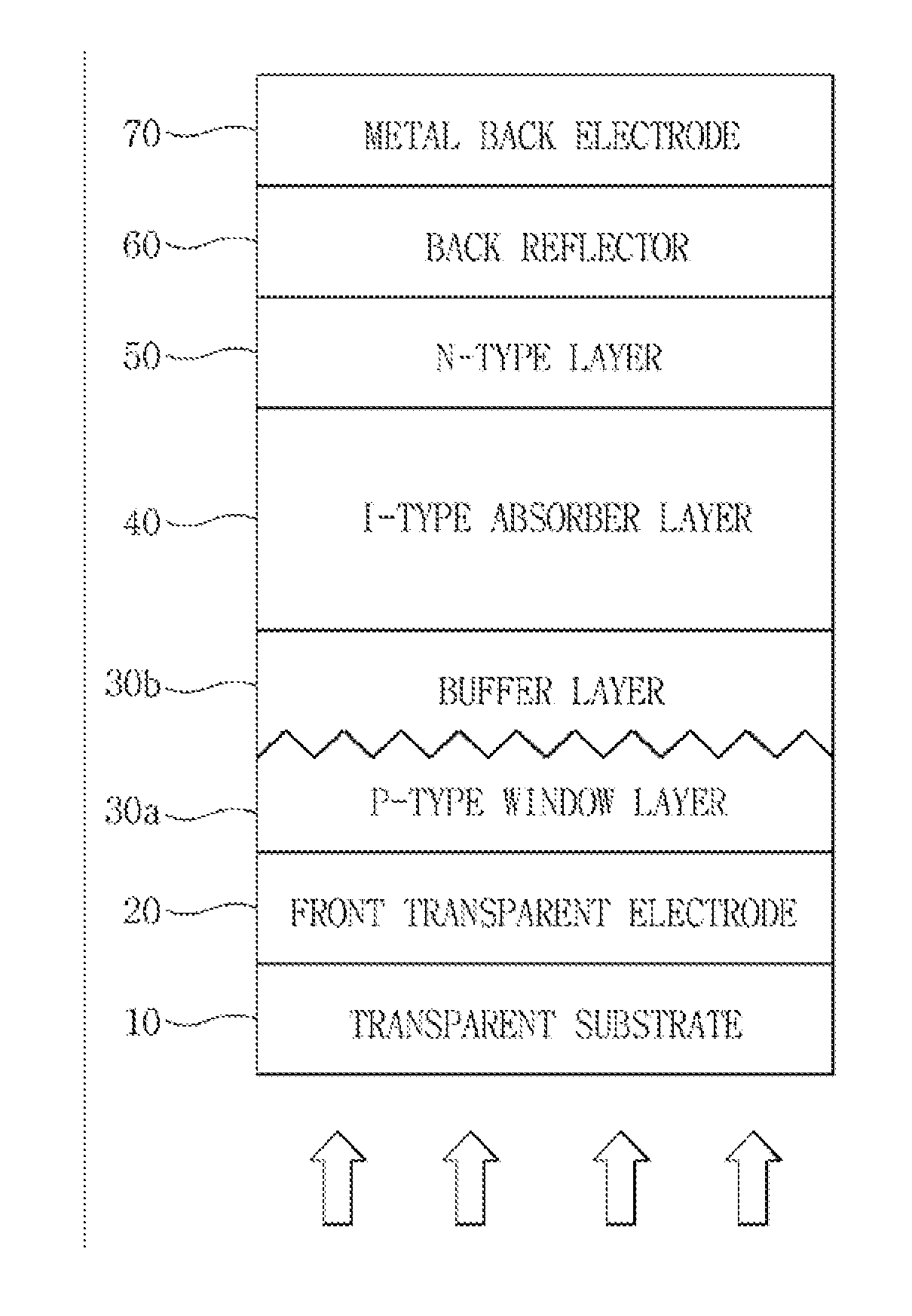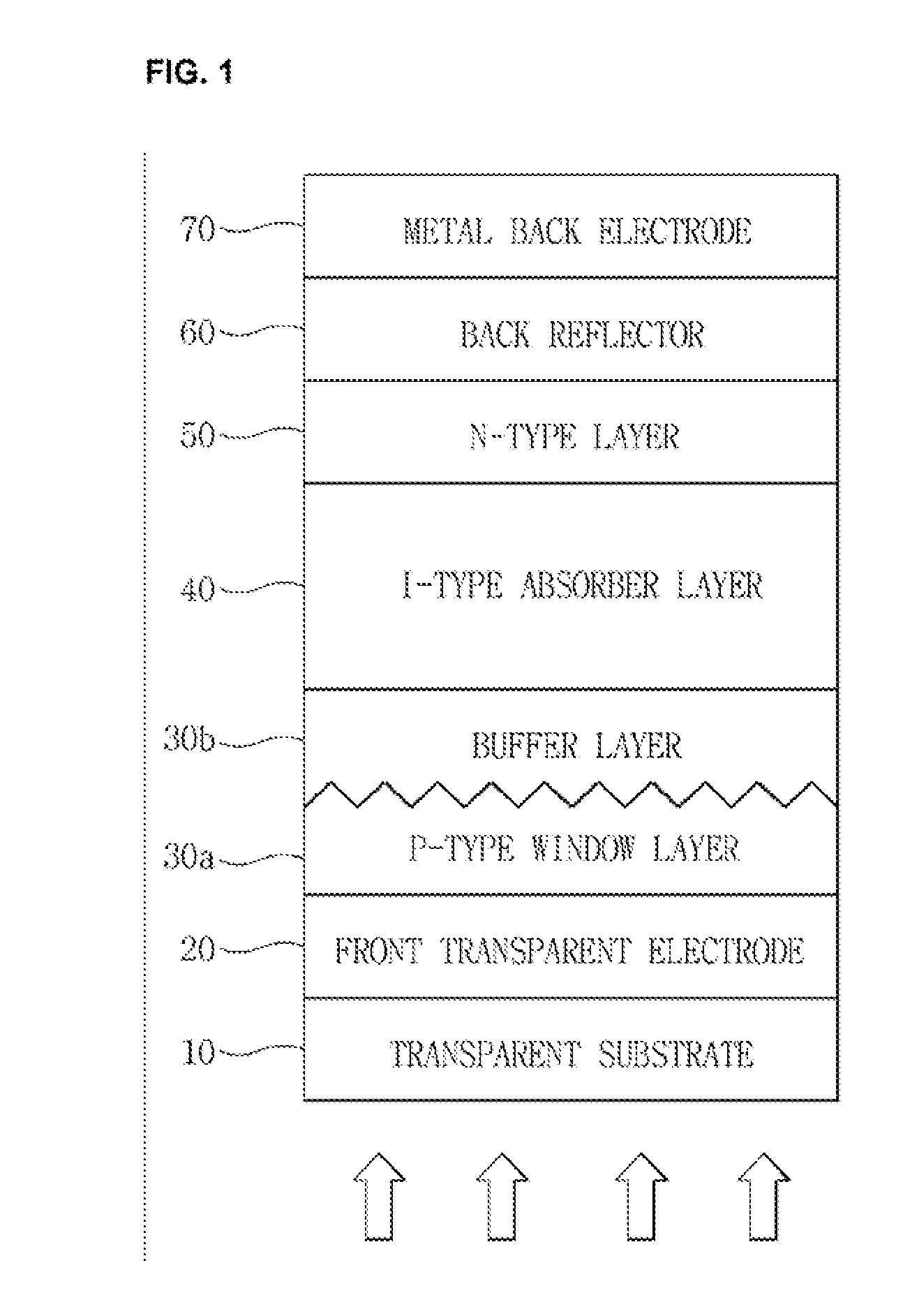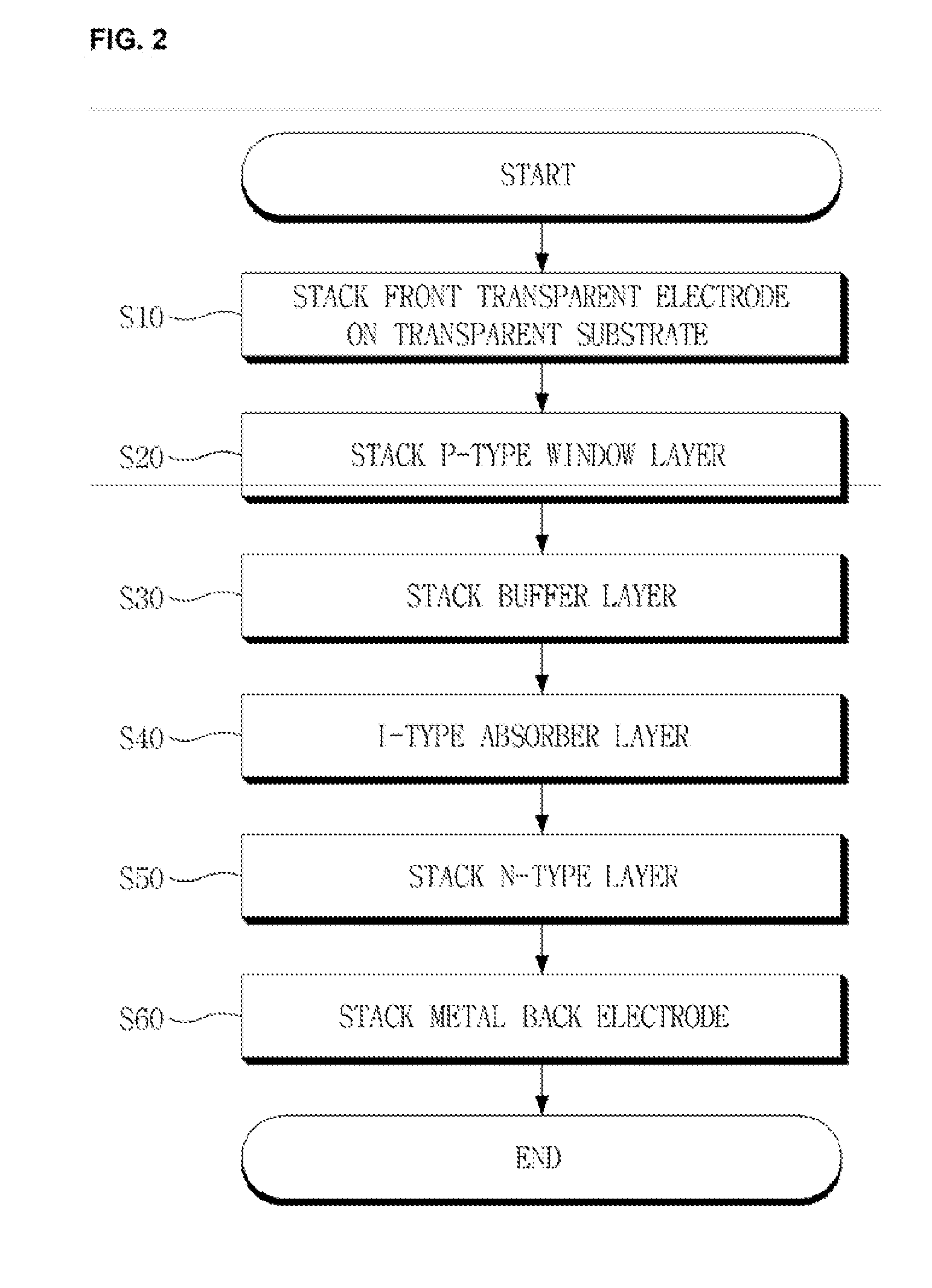Thin film silicon solar cell and manufacturing method thereof
a solar cell and thin film technology, applied in the direction of basic electric elements, electrical equipment, semiconductor devices, etc., can solve the problems of limiting the overall cell performance, recombination loss, and high recombination loss at the interface between the p-type window layer and the i-type absorber layer
- Summary
- Abstract
- Description
- Claims
- Application Information
AI Technical Summary
Benefits of technology
Problems solved by technology
Method used
Image
Examples
Embodiment Construction
[0031]The present embodiments will be described in detail with reference to accompanying drawings.
[0032]A thin film silicon solar cell according to the present embodiment has a structure in which a plurality of unit cells are electrically connected to each other in serial on a transparent substrate 10 such as a glass substrate or a transparent plastic substrate.
[0033]FIG. 1 is a cross-sectional view illustrating a single junction p-i-n type amorphous thin film silicon solar cell in accordance with an embodiment. Referring to FIG. 1, a thin film silicon solar cell includes a front transparent electrode 20 which is formed on a transparent substrate 10 and on which a surface texture is formed; an amorphous silicon carbide (p-a-SiC:H) window layer 30a (referred to as ‘p-type window layer’ hereinafter) low diluted with hydrogen on the front transparent electrode 20; an amorphous silicon carbide (p-a-SiC:H) buffer layer 30b (referred to as ‘buffer layer’ hereinafter) more highly diluted w...
PUM
 Login to View More
Login to View More Abstract
Description
Claims
Application Information
 Login to View More
Login to View More - R&D
- Intellectual Property
- Life Sciences
- Materials
- Tech Scout
- Unparalleled Data Quality
- Higher Quality Content
- 60% Fewer Hallucinations
Browse by: Latest US Patents, China's latest patents, Technical Efficacy Thesaurus, Application Domain, Technology Topic, Popular Technical Reports.
© 2025 PatSnap. All rights reserved.Legal|Privacy policy|Modern Slavery Act Transparency Statement|Sitemap|About US| Contact US: help@patsnap.com



